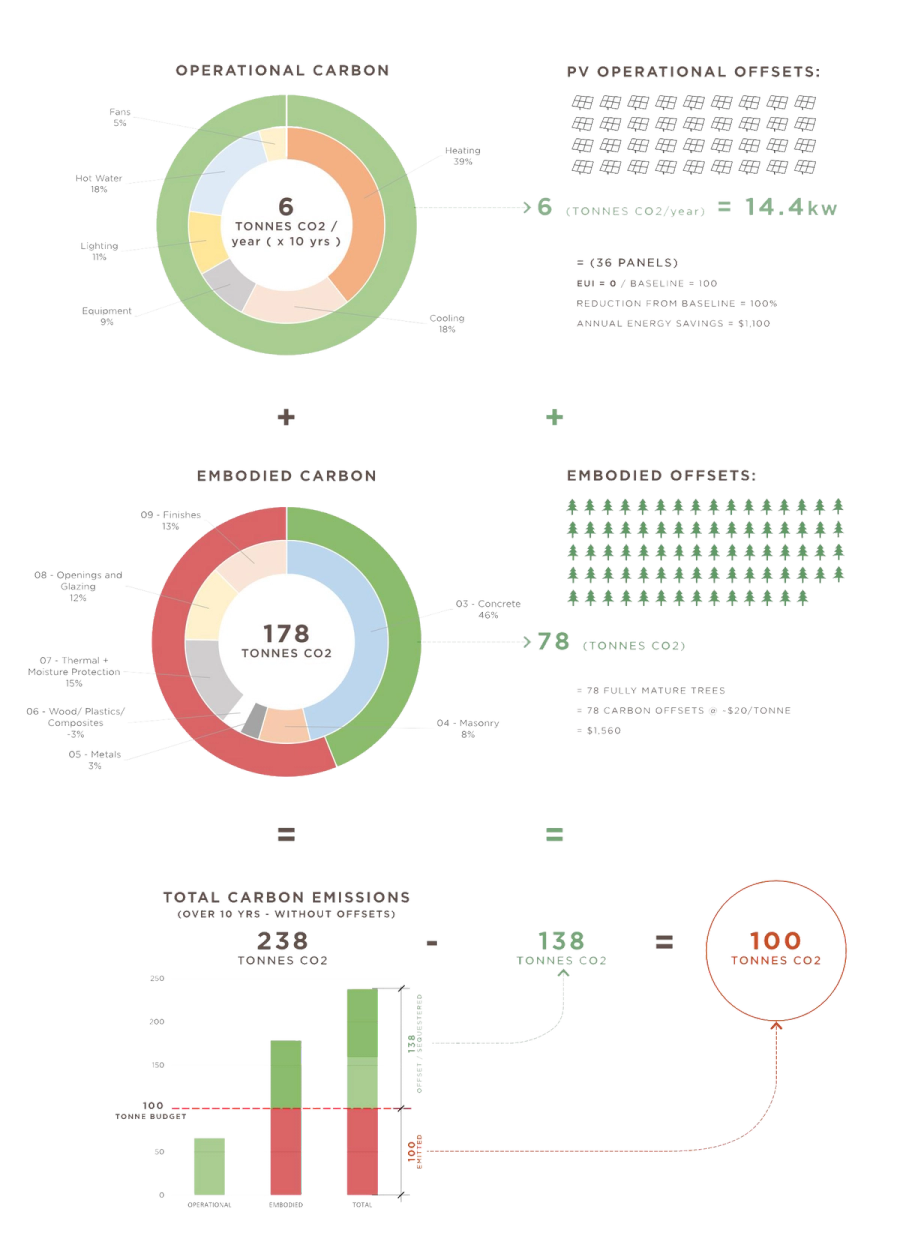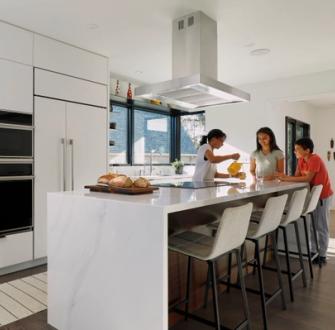Introducing the Carbon Budget
Soulful, Responsive, Regenerative Design
Human-induced climate change is one of the greatest challenges facing our planet, and we believe that architecture has a crucial role to play in addressing this crisis. The built environment is a significant contributor to greenhouse gas emissions, and it’s our responsibility to take action to reduce the carbon footprint of our work. To this end, this year we are happy to introduce a Carbon Budget initiative for residential projects.
Launched in Spring 2023, this initiative takes aim at each project’s operational and embodied carbon, setting an aggressive target of 100 metric-tons (tonnes) per home (for reference, driving from San Francisco to Atlanta emits 1 metric ton of carbon, and the average FA home has a carbon footprint of ~200 metric tons). We will measure the projected carbon emissions of each project throughout the design phases via energy modeling and embodied carbon analysis, using this to data to further optimize our designs. We will continue to measure operational carbon emissions post-occupancy, and carbon offsets will be purchased for those exceeding the budget one year after completion.
This initiative is part of our ongoing effort to minimize the impact of our work and create buildings that are both beautiful and environmentally responsible, an important step towards both reducing our carbon footprint and supporting global climate action. We are working closely with our clients, consultants, contractors, and vendors to thoughtfully employ passive design strategies, champion efficient mechanical & plumbing systems, and source responsible, healthy materials.
We hope that our 100-tonne Carbon Budget initiative will inspire others in the industry to take similar steps toward climate action, and we look forward to working with our clients to create soulful, responsible, and regenerative homes that are a pleasure to live in.
Our Carbon Budget Dashboard tracks each project’s predicted carbon emissions from the design phase through one-year post-occupancy, and continues to account for emissions over a 10-year period.
Emissions are broken down into two categories – operational carbon, which refers to the emissions produced by a building during day-to-day operations, such as heating & cooling, lighting, and appliance use; and embodied carbon, which refers to the emissions produced during the extraction, manufacturing, and transportation of building components and materials, and the construction process itself.
The dashboard quantifies these predicted emissions, also accounting for the renewable energy or carbon offsets required to meet the 100-tonne budget.


